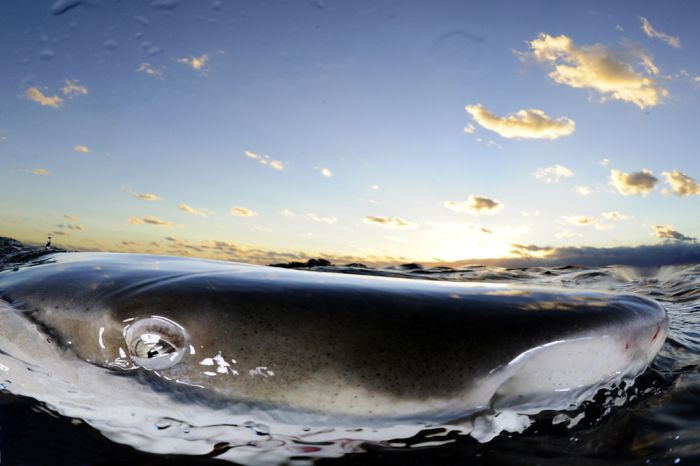|
|
Shark
|
Most sharks are ovoviviparous, meaning that the eggs hatch in the oviduct within the mother's body and that the egg's yolk and fluids secreted by glands in the walls of the oviduct nourishes the embryos. The young continue to be nourished by the remnants of the yolk and the oviduct's fluids. As in viviparity, the young are born alive and fully functional. Lamniforme sharks practice oophagy, where the first embryos to hatch eat the remaining eggs. Grey nurse shark pups intrauterine cannibalistically take this a step further and consume other developing embryos. The survival strategy for ovoviviparous species is to brood the young to a comparatively large size before birth. The whale shark is now classified as ovoviviparous rather than oviparous, because extrauterine eggs are now thought to have been aborted. Most ovoviviparous sharks give birth in sheltered areas, including bays, river mouths and shallow reefs. They choose such areas for protection from predators (mainly other sharks) and the abundance of food. Dogfish have the longest known gestation period of any shark, at 18 to 24 months. Basking sharks and frilled sharks appear to have even longer gestation periods, but accurate data are lacking.
• Oviparity
Some species are oviparous like most other fish, laying their eggs in the water. In most oviparous shark species, an egg case with the consistency of leather protects the developing embryo(s). These cases may be corkscrewed into crevices for protection. Once empty, the egg case is known as the mermaid's purse, and can wash up on shore. Oviparous sharks include the horn shark, catshark, Port Jackson shark, and swellshark.
|
|









